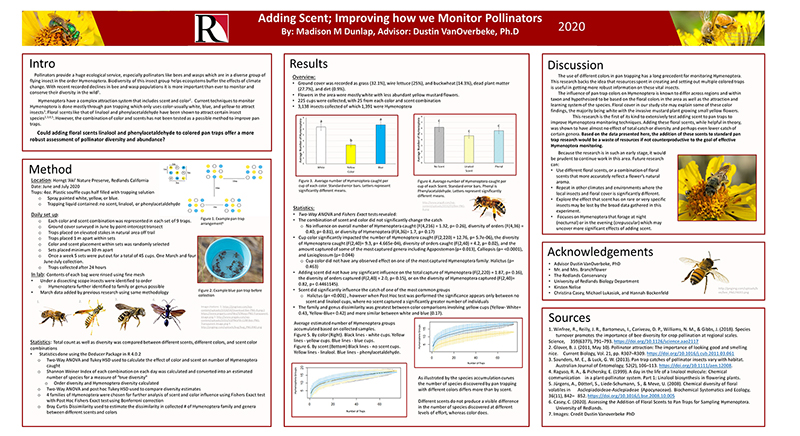Adding Scent; Improving how we Monitor Pollinators

Madison Dunlap '21
Abstract
The order Hymenoptera provide a large amount of the pollination that produces our food and vegetation through its diverse bee and wasp species. Due to environmental change these populations are experiencing massive declines and thus require accurate monitoring. Currently pan traps that rely solely on color to attract insects are used, potentially missing insects that rely on other cues. This research sought to find out if adding floral scents, to colored pan traps could increase the number and diversity of Hymenoptera for a more accurate assessment of these populations. Colored pan traps (white, yellow, or blue) contained differently scented trapping solutions (no scent, linalool, or phenylacetaldehyde) and collected insects in a natural area. Samples collected were categorized under microscope into orders and Hymenoptera were further taken down to family or genus when possible. Collections occurred once a week for four weeks in June and July as well as once in March. There was no observable difference between color scent combinations on the number of insects caught or the diversity caught. Color significantly impacted the number and diversity of Hymenoptera caught and order diversity. The only significant effect scent had on catch was concerning individuals in the order Halictus, which were caught in higher numbers in unscented pan traps. Dissimilarity index scores showed a similar non-influence of scent. Based on the data presented here, the addition of these scents to standard pan trap research would be a waste of resources if not counterproductive to the goal of effective Hymenoptera monitoring.


